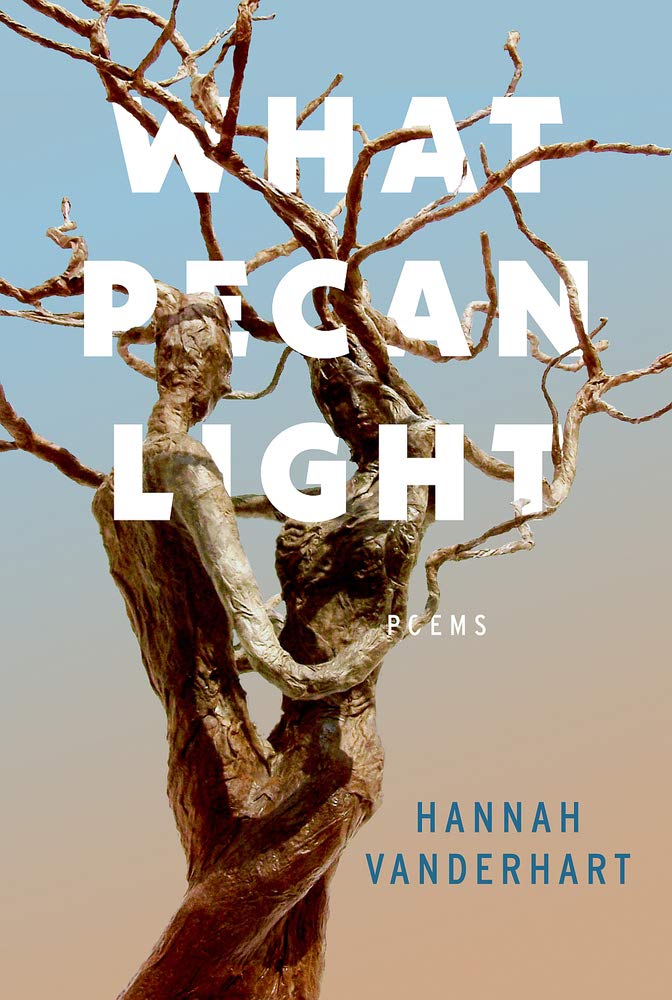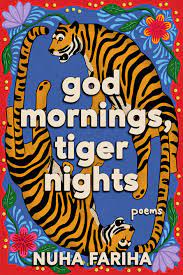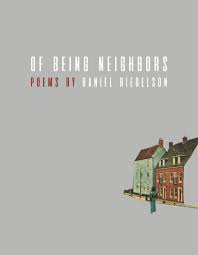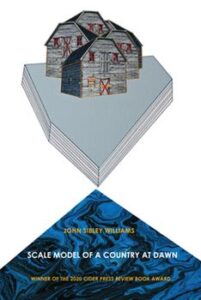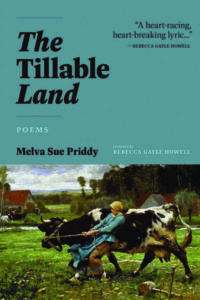Reviewed by Christian J. Collier and Kasey Jueds | April 14, 2022
Bull City Press, 2021
Paperback, 68 pages, $18.95
KJ: Christian, I’m so happy to be talking about this beloved book with you. I’m struggling with the question of where to begin! It’s a question that often comes up when I’m beginning a review of a book I admire, but it feels especially weighty with What Pecan Light. The scope of these poems is so vast: they reach back into family history and the history of the American South; they wrestle with whiteness and racial violence, with a great-grandfather who enslaved, with Confederate monuments and the Confederate flag; they trouble and upend notions of linear time, of what’s “past” and what’s “present.” They feel pain and curiosity and love and shame and hope.
And they question. “What do I do with this knowledge?” VanderHart’s speaker asks in the book’s second poem, “Western One of Top Parish Broiler Producers.” It feels to me like the whole book turns on this question: what do I do with this knowledge? With this history, and this now? And it seems like one answer (though I think the poems would argue this is not the only answer) is to write into and through the questions by making poems out of them, poems which bring the questions into a wider and deeper and more public being.
CC: I agree. So much of the book is dealing with witness and acknowledgment, which is very bold. In the South, a lot of what is both communicated and carried lies in what isn’t said, so the fact that these poems are rooted in seeing, confessing, and bringing things into the light is such a fascinating angle. I think it’s also an approach that allows the poet to write from a place of compilation about complication (that relationship to whiteness, a history of slavery, a region and country dealing with its racist past and present, etc.).
KJ: What you say about the South—that weightiness of what isn’t said—feels so resonant in these poems. There’s a tension between speaking and not speaking, between seeing and not seeing, that gives them tremendous depth and gravity. The poems do speak out, they witness, and they’re also aware of the silence that surrounds them. “Post-Antebellum in the States” begins, “We try not to mention history / at the Winn-Dixie—”. Even within the speaker, there’s sometimes conflicted desire: the (stronger) desire to know and to give words to that knowing, and the difficulty of that desire when it pushes, as it does, against family and community: “I had to do the work of books / to find what I did not want to find,” the speaker says in “Poem Ending in a Line from C.D. Wright.” There’s also the shape-shifting nature of words, how one word can be used to mean different, sometimes diametrically-opposed, things—as, in the same poem, the word “war” calls up different realities for the speaker and their neighbor: “It’s hard—people had family die / in that war │ and he doesn’t mean Iraq │ or drones / or the border our neighbors’ children die to cross”. How fraught it can be to speak—and how boldly, as you say, the poems do so.
Christian, can you expand on the idea of “compilation about complication”? I love this phrase.
CC: Absolutely. There are so many accumulated and inherited moments that inform the speaker’s voice as well as burden it. You’ve already touched on some of them. There’s often a sense of being aware of some powerful truth and then deciding what to do with it or how one should or is expected to carry it. The poem “Chicken Farming in the Pelican State” begins with the line, “It’s not like we can choose what spears us through the heart”. I think that encapsulates so much of what the speaker is wrestling with throughout the collection. When I read “I cannot keep this from my child / he cries, asks if we can pray” in “The Confederate Flag is a War Flag”, I believe we see how the strain of living with such a barbed history internally and externally impacts generations of a family.
KJ: Yes, definitely. Since reading what you wrote last I’ve been thinking about the children in the book, the speaker as a child and the speaker’s own children. I’ve been thinking about the way the speaker grows into an ability to perceive, and then to write and speak, about the powerful truths you mention—and how, for so many reasons, this ability was not available to the speaker’s child-self. What was presented to the speaker when they were young—likely the only option—was silence, a literal and emotional/psychic turning away. In one of my favorite poems, “The Lives of My Childhood,” the speaker describes undressing their paper dolls: “I did not even need to look. The souls / of the paper dolls counted on that.” And then there are these lines, from “Post-Antebellum in the States”: “As a child I ran with a rebel flag / and we did not question // our play, which was violent / and harmonized with our idea of God.” As the narrator grows into speaking, they also become a mother. It seems to me that one of the book’s most pressing questions is how to parent from inside an awareness of whiteness and history.
CC: For sure. I think motherhood is one of the vehicles through which the speaker sees, recalls, and addresses what is simultaneously behind and present with them. It provides a lens for the speaker to process and interrogate what they have inherited, what they wish to change, etc.
With that in mind, I am fascinated by the work of admission throughout the book. For instance, in “When Someone Says a Prayer is Masterful,” the speaker says, “I have a master in my family tree / Jack Allums / he will always be there.” We get the understanding that there are some legacies one cannot move beyond.
I am also fascinated by the work of anchoring that the details throughout the collection provide. Several times, we are treated to descriptions of food, for instance, that are distinctively Southern. The poem “The Supper Book” is one very apt example of that. I love how the descriptions and listings of food, items around a farm, and more serve to place us.
KJ: I love this as well, and am so glad you brought it up. I find the poems that explore the lives (and deaths) of farm animals, especially chickens, powerfully moving and instructive. Here’s another place where the speaker doesn’t turn away, though I think the realities of farming can be easy to gloss over or pastoralize. I’ve heard VanderHart refer to Jenny George as a poet who renders farm animals both compassionately and unsentimentally; I agree, and I think the poems in What Pecan Light do similarly thoughtful work, in a way that’s both unsparing and empathic. I’m thinking of “Homily on the Hand and Eye,” with its detailed attention to the butchering and plucking of chickens, and also of “Unwashed,” a poem I particularly love, which calls up “the blood and shit of laying” and the visceral but tender connection of laying hens with human mothering. And yes, the food! Such a central and evocative aspect of these poems. I feel like this is a book of complicated love (and the way calling to account is an essential aspect of love). Food is an offering of that love, serving to place us (as you said) and to tether the speaker to their family and their place in the world, with all its pain and complications and questions, as well as its joys.
CC: For sure. Speaking of tethering, how do you see the book’s title knitting all the pieces to one another? We get the title in the poem “Chicken Farming in the Pelican State” and, later in the collection, the piece “The Light Has Always Been Going Down” appears. Different forms of light show up throughout, too, so I’m also curious as to how you see the work that light is doing.
KJ: Great question. I love this in part because it gives me the chance to return to “The Light Has Always Been Going Down,” a poem I’ve read many times and one I’m always moved by. Light features powerfully here: the word occurs five times in the poem’s body, and obviously again in its title. It’s a poem of profound healing. There’s healing on the physical level, for a patient in a hospital where “the aim has always been / do no harm.” But the healing also feels spiritual, emotional, psychic. The poem begins “What: the quiet work of words” and references a book the patient is reading: “the book is light / in their hands.” I love the multiple potential meanings of “light” here: the book isn’t heavy or hard to hold, and further, it’s a source of light for the patient, a source of witnessing, truth-telling, sustenance. It has a kinship with the “inner light” of the Quaker tradition. This sort of healing, or desire to heal, via the work of words feels central to the book’s aspirations. There’s a beautiful parallel this poem draws between the work of doctors and nurses and the work of the reader/writer, who seeks to know the truth, to call to account, to love, and to make well.
“The Light Has Always Been Going Down” is carefully placed within the book. It follows a poem that takes place in the dark (“Night is the Time of Monument Removal”) and precedes “This is the Barbeque We Had Last Night,” a poem that asks “Who said there will / be morning?” “The Light Has Always Been Going Down” bridges the two, holding both darkness and light: “The light has always been / going down. The dark always full of it.” Evening and morning, dark and light, seem to need each other in these last three poems, to be inseparable in some way. There’s work we do at night and work we do during the day, and both types of labor, both ways of being, are necessary.
I’d love to know your thoughts about this question of light, and also about VanderHart’s poetic ancestors/family. I’m thinking especially about the poems whose titles reference C. D. Wright and Claudia Rankine, but there are probably other unnamed influences who are also important.
CC: I love your response! For me, I think the beginning epigraph from Linda Gregg really lets us know what the collection is interested in doing. It’s such a great, smart move, too. Immediately after the table of contents, the first thing that greets us is “I don’t expect the light / to save me, but I do believe / in the ritual”. Those lines from Gregg’s “The Light Continues” provide an excellent lens with which to view everything that follows.
Regarding ancestry, I enjoy that VanderHart gives us a few explicit influences (the aforementioned C.D. Wright, Linda Gregg, and Claudia Rankine). There is an honoring in that, but also showing us how the work in this collection speaks to and with some of the art these individuals produced. In my opinion, there is both a vulnerability and a boldness in that.
In “Poem Ending in a Line from C.D. Wright” and throughout What Pecan Light, actually, I feel that VanderHart is illustrating how similarly they and C.D. Wright approach the composition of a line. The spotlighting VanderHart does throughout when they are exploring the ugly things that have become normalized, accepted, and often unspoken, makes me think of the work Rankine has been doing since 2004.
Who else do you get notes of in the collection?
KJ: Linda Gregg, definitely. I’m so glad you brought up that epigraph and agree with you about these lines being a lens bringing the book into focus for us. And now that I think about it, I find Gregg’s influence present throughout the book, though she isn’t named again. Both she and VanderHart have this compelling way of getting at painful truths through often plainspoken language. Their emphasis on the everyday, too, on ordinary objects and actions and relationships—this feels like something else they have in common. Oh, and also their sense of local-ness, of deep attention to the physical places in which they find themselves. I’m thinking of Gregg’s poems about Northern California and Greece, and of course VanderHart’s focus on the southern states they have lived in and know intimately.
And I am adding Adrienne Rich to our list! I feel Rich’s influence throughout the collection, too, especially in the poems’ wide-hearted desire for justice. And she is present most obviously in “Diving Into the Wreck,” another of my favorites. VanderHart’s concern with parenting in a wide-awake way is so beautifully enacted here, as the narrator snuggles with their son while reading Rich, almost physically drawing him into the book as they draw him lovingly toward their body, psychically drawing him toward Rich’s words, the worlds she illuminates. Again, this combination of love and witnessing, critique and care, which I find so instructive and inspiring.
Christian, I have loved having this conversation with you (and could probably go on for ages). Is there anything you would like to add?
CC: I have really enjoyed this conversation as well. I am extremely excited for readers to dive into this work. There is a lot there and a great deal that will live with them after they close the book.
Hannah VanderHart lives in Durham, North Carolina, under the pines. She has poetry, nonfiction, and reviews published in Kenyon Review, The American Poetry Review, Poetry Northwest, AGNI, RHINO Poetry, Tinderbox Poetry Journal, The Rumpus, The Chattahoochee Review, Southern Humanities Review and The Greensboro Review. She is the author of the chapbook Hands Like Birds (Ethel Press, 2019) and the reviews editor at EcoTheo Review.


